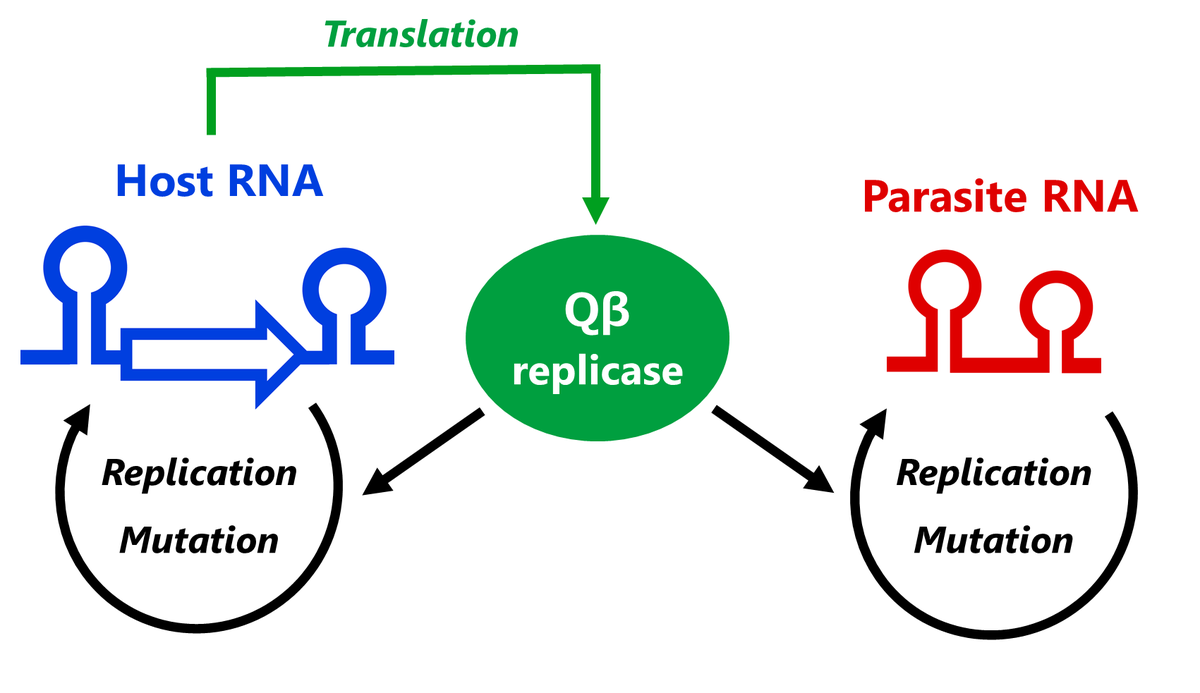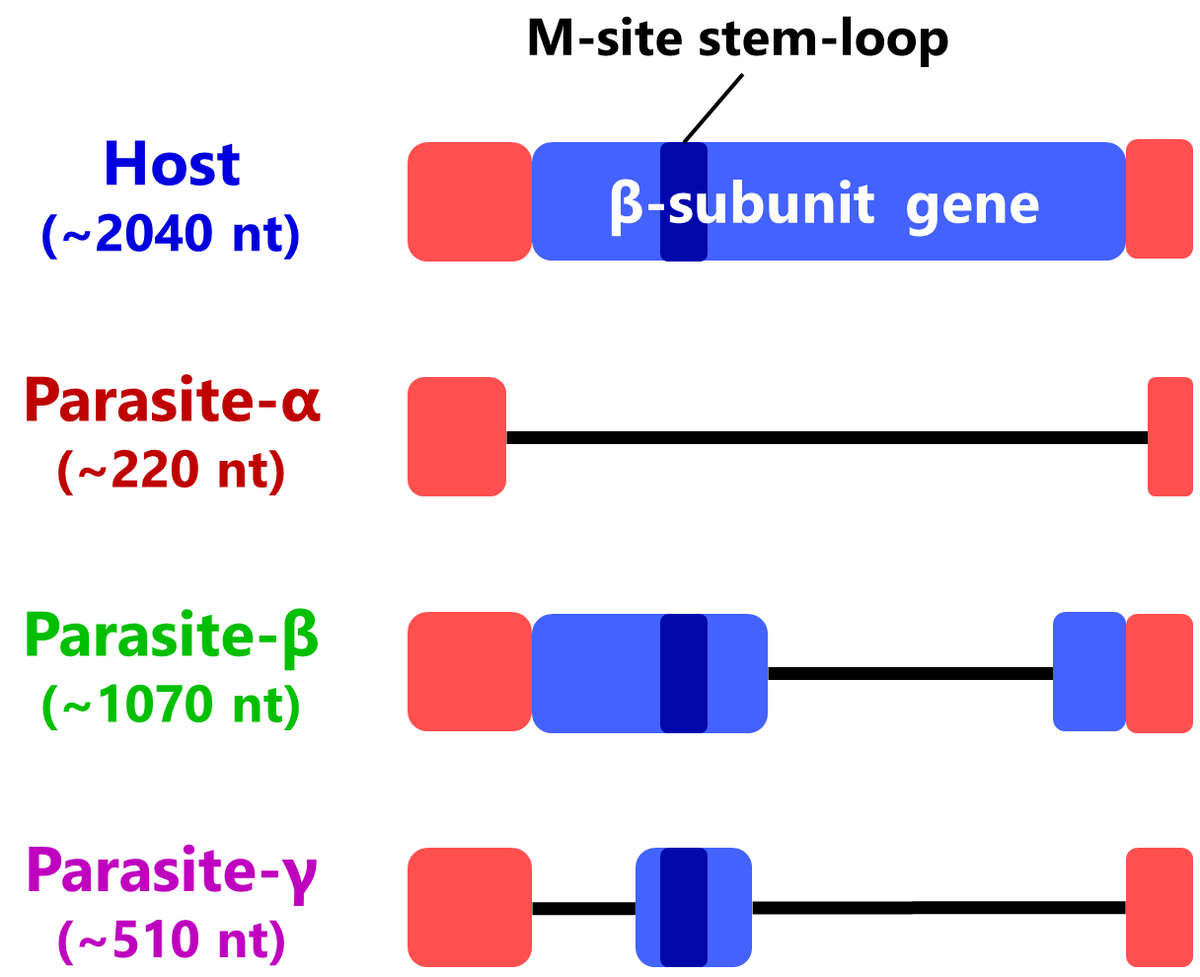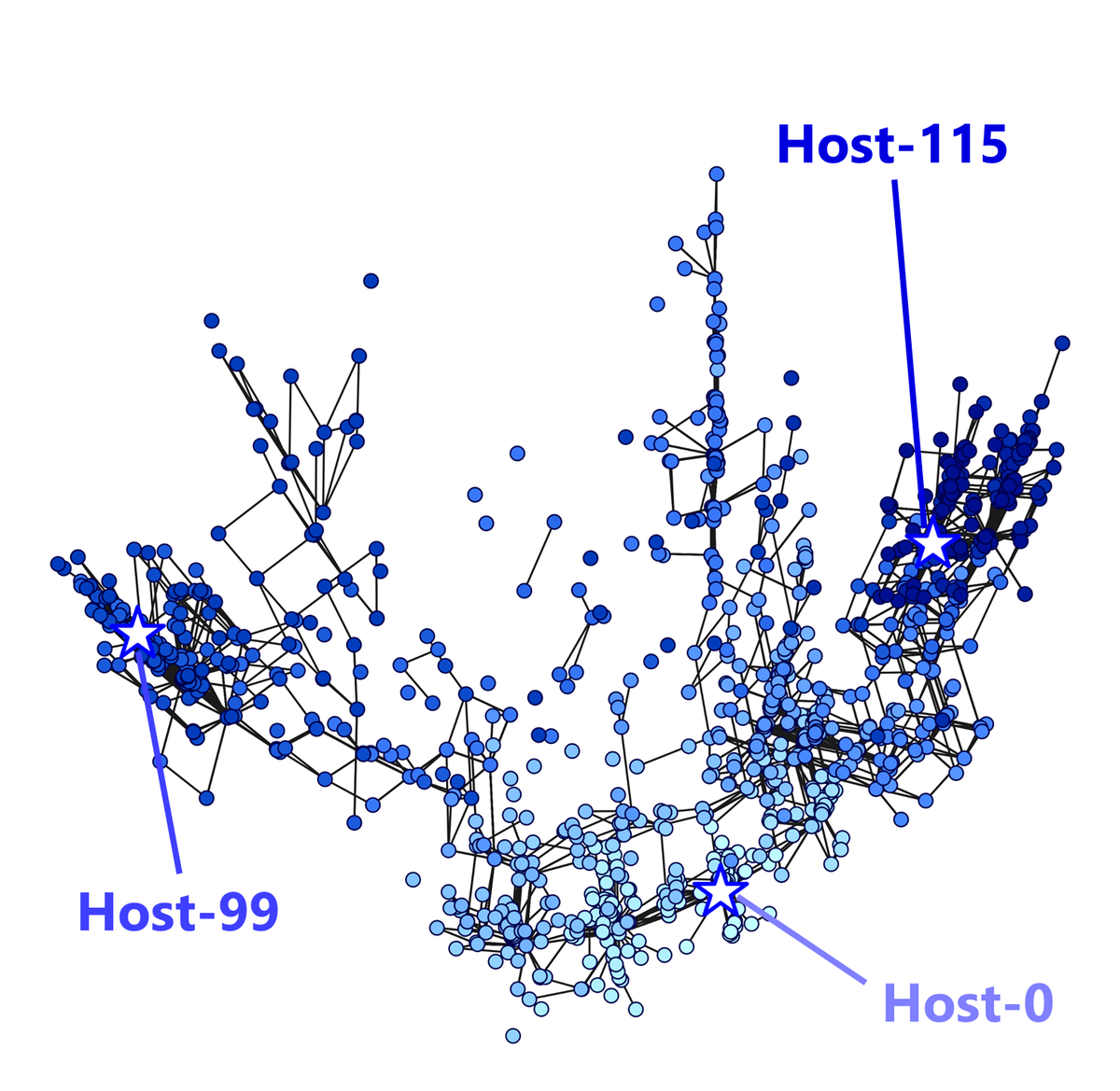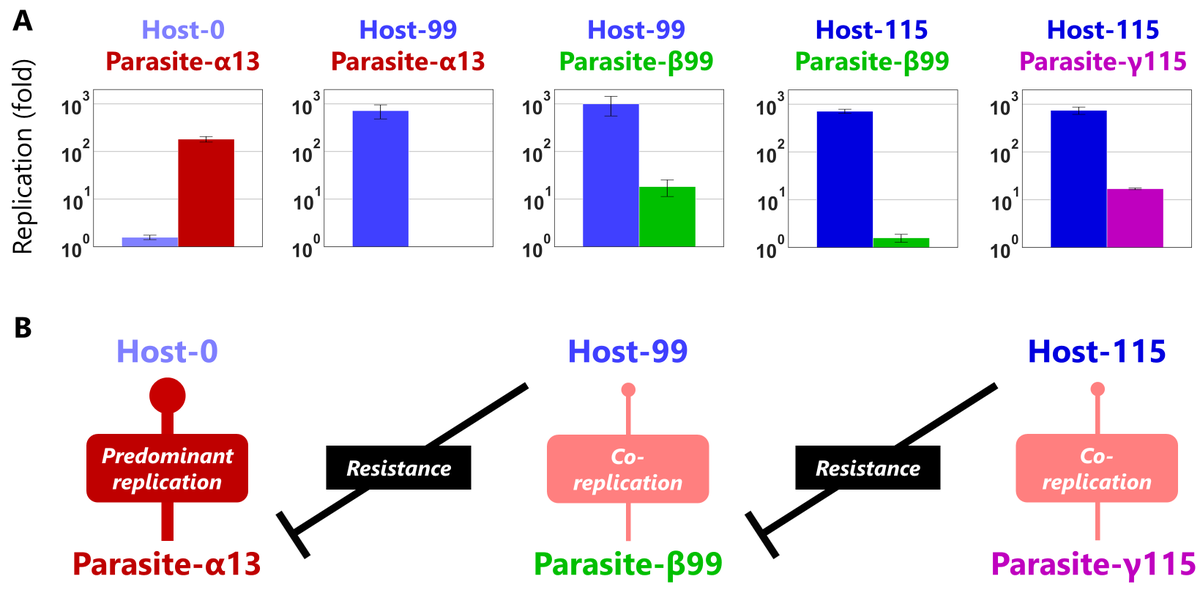Our work was published by @eLife. We conducted Darwinian evolution of RNA replicators and showed that the coevolution of host-parasite molecules plays a key role in generating diversity and complexity in molecular evolution before the origin of life.(1/8) https://elifesciences.org/articles/56038 ">https://elifesciences.org/articles/...
Our system has two types of RNA replicators - host and parasite. The host RNA provides an RNA replicase for its replication, but freeriding parasitic RNAs emerge through replication errors. Then host-parasite warfare starts, competing for limited amount of the replicase. (2/8)
We mixed these RNA in a cell-free translation system and put them in cell-like compartments, then performed an evolution experiment by repeating replication-dilution cycles. Mutant RNAs are generated by error-prone replication and undergo Darwinian evolution (3/8).
The host-parasite population exhibited prey-predator-like oscillation dynamics during the experiment. Interestingly, the oscillation pattern changed through evolution, and finally new parasitic RNA species appeared in the later stage of evolution. (4/8)
The original parasite was a short RNA optimized for rapid replication similar to famous Spiegelman& #39;s Monster ( https://en.wikipedia.org/wiki/Spiegelman%27s_Monster).">https://en.wikipedia.org/wiki/Spie... Surprisingly, new parasites became much longer with a part of evolved hosts, probably for better recognition by evolved replicase. (5/8)
The host RNA continued to evolve and diverged into distinct lineages in a sequence space. Remarkably, this result stands in sharp contrast with our previous "almost parasite-free" evolution, where the evolution was monotonous and stopped in the end. https://www.nature.com/articles/ncomms3494">https://www.nature.com/articles/... (6/8)
As shown in the animation, host-parasite RNA populations wandered around the sequence space, and sometimes drastic replacement happened (e.g. the host [blue] quickly shifted from the left to right branch upon the emergence of the parasite-β [green], between 94-104 rounds). (7/8)

 Read on Twitter
Read on Twitter







